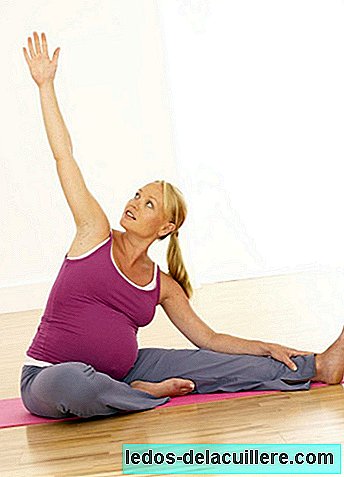
No better time in our lives than during pregnancy to exercise and keep fit. Our health, and that of the baby, will thank you. Further, if we improve our daily postures the possible discomforts are prevented derived from weight gain and changes in the body of the pregnant woman.
During pregnancy the tissues soften and stretch. If due to sedentary lifestyle you don't have a good muscle tone, the problems get worse. Moderate exercise helps eliminate problems such as sciatica, back pain, cramps ... Also, we will consider these posture recommendations.
- Sitting.
When we remain seated, the back should be straight and supported by the backrest. If we do not get this position, we can help ourselves with a cushion or a rolled towel that protects the lower back, without exposing it and without support. The legs should not be crossed, because blood circulation is difficult, leading to possible problems such as varicose veins.
You can keep your feet a little high, resting on a cushion or footrest if we are more comfortable. It is also important not to remain long sitting or in the same position, so we will try to alternate time sitting, standing and walking. When getting up, the movements should be smooth and keeping your back straight as far as possible.
- Go to bed.
To lay down, it is best to lie down slowly, always with a first step that will be sitting on the edge of the bed or sofa. Once seated, we can slowly swing the legs to put them on the bed, or extend them so that they are parallel to the hips.
We can gradually lower ourselves to rest on our elbows and not force the abdominals or kidneys to support the weight of the upper body. Helping each other with our hands, we can slide until we lie down to rest.
- Lying down
To sleep, there comes a time when pregnant women find it difficult to find a comfortable posture and allow them a quality rest. However, it is good to sleep on your side, resting on the left side.
When sleeping on your back, the aorta is compressed, reducing placental perfusion, and on the right side the vena cava is pressed and oxygenation of the uterus is hindered. The compression of these 2 vessels is given by the sum of the pregnancy weights against the dorsal spine. A slight lateralization usually decompresses the area. A cushion or pillow can be used to place it between the legs bent forward.
- Get out of bed.
When we get up When we are lying down, it is good to follow a series of steps, especially when the belly is already bulky. First, we can stand on our side, so that we can support the elbow to support the upper body weight with the arm. We can push ourselves with our hands to sit and finally, with our backs straight and slowly, get up.
- Standing.
When we are standing, stopYes, it is good to keep your shoulders relaxed, with your back straightened, with your head high. Avoid straining your knees and try to keep the weight evenly. It is not the best time to wear heels, or tight, to facilitate circulation.
- Bend.
It is best that we do not perform "weight lifting" exercises once the pregnancy is advanced. Although if it is inevitable to have to bend down to take something from the ground, it is best to do it slowly until squatting, with your back straight, and if possible supporting a hand in a fixed place to prevent loss of balance. Never bend down by bending your waist and pressing your belly. To get up, we will use the calf muscles and thighs.
- Practice sex.
Finally, we remember some important positions during pregnancy, which are the best positions to make love: sideways, cats, sitting on the man or standing are some alternatives that prevent abdominal pressure on the future mother.
Obviously, these little efforts cease to be if we follow a gentle exercise routine that they keep us in shape, which, in addition, will have a very favorable impact on our postpartum recovery.












